Research on Fernando Zobel as art patron and printmaker – continuing research in Madrid and Cuenca, Spain
Written by Aprille P. Tijam, Research Director and Head of Exhibitions and Collections, Ayala Museum (ITP 2019, Philippines)
In 2022, I had the opportunity to conduct the first part of phase two of my research on the prints of Fernando Zóbel (1924-1984), Filipino-Spanish abstract artist, at the Fundacion Juan March in Madrid and at the Museo de Arte Abstracto Español in Cuenca, Spain. This forms part of a three-phase research program on the graphic art of Zóbel. My research journey began when I was introduced to Zóbel’s donation of prints and drawings to the British Museum department of prints and drawings while I was an International Training Programme fellow in 2019. The first part of phase two was realized with a grant from the ITP, with the collaboration of Museo Nacional del Prado, Ayala Foundation, Inc/Ayala Museum, and Fundacion Juan March, and supported by the heirs of Fernando Zóbel. I shared the results of my research in the blog Research on Fernando Zobel at the Fundacion Juan March, Spain (Aprille Tijam, Philippines, ITP 2019) – ITP (bmitpglobalnetwork.org)
With so many resources to access – more than 100 Zóbel prints, 133 sketchbooks, and 195 titles of the prints by Spanish abstract artists represented in the donation to the British Museum – my research time in 2022 was very limited. Hence, I returned this year to continue with second part of phase two of my research at Fundacion Juan March (FJM). In 1980, Zóbel donated to FJM the Museo de Arte Abstracto Español and his collection of paintings, sculptures, drawings, graphic works of contemporary Spanish art. He also donated his sketchbooks, press clippings albums, and 3,556 books. From June 17-21 2024, I catalogued 68 prints at the FJM, dated from 1962 to 1983. The prints included serigraphy, black offset on paper, etching, stencil print with dry brush oil on paper and lithography.
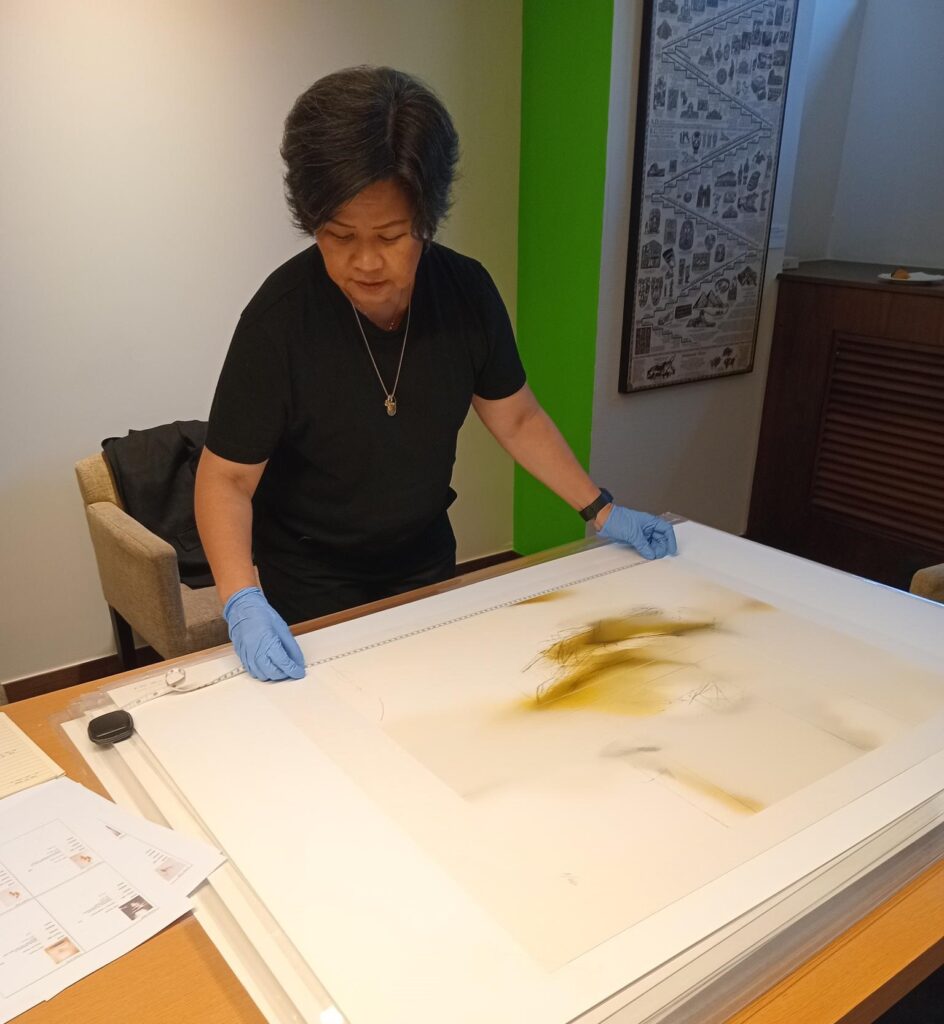
The earliest print catalogued was the P/A edition of Icaro (1962; Litografia en negro sobre papel fondo beige en linoleo). In 2022, I catalogued edition 29/30 in the FJM collection. The Ayala Corporation (AC) has loaned to Ayala Museum the edition 28/30 and two other editions – Primer Estado (6/8) and Prueba B, Estado Dos; as well as the rendition of Icaro (1962) in large-scale painting (oil on canvas). The artworks from the AC collection cited were recently exhibited in Imprint (April 26, 2023-March 24, 2024) at the Zobel Gallery in Ayala Museum.
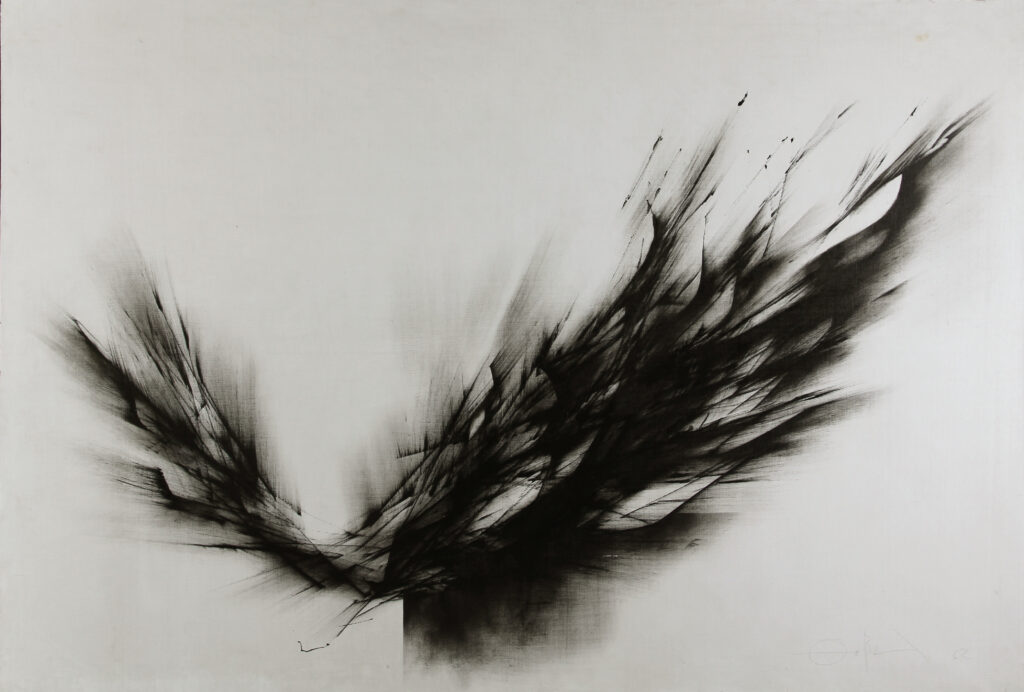
Ayala Corporation Collection. On loan to Ayala Museum
During this year’s research at FJM, nine sketchbooks (Nos. 76, 78, 77, 79, 84, 86, 105, 108, and 110) were made available at the library. These were being prepared for presentation in the upcoming exhibition Zobel. The Future of the Past at Ayala Museum, Philippines (September 14, 2024 to January 26, 2025), in commemoration of Zóbel’s 100th birth anniversary.
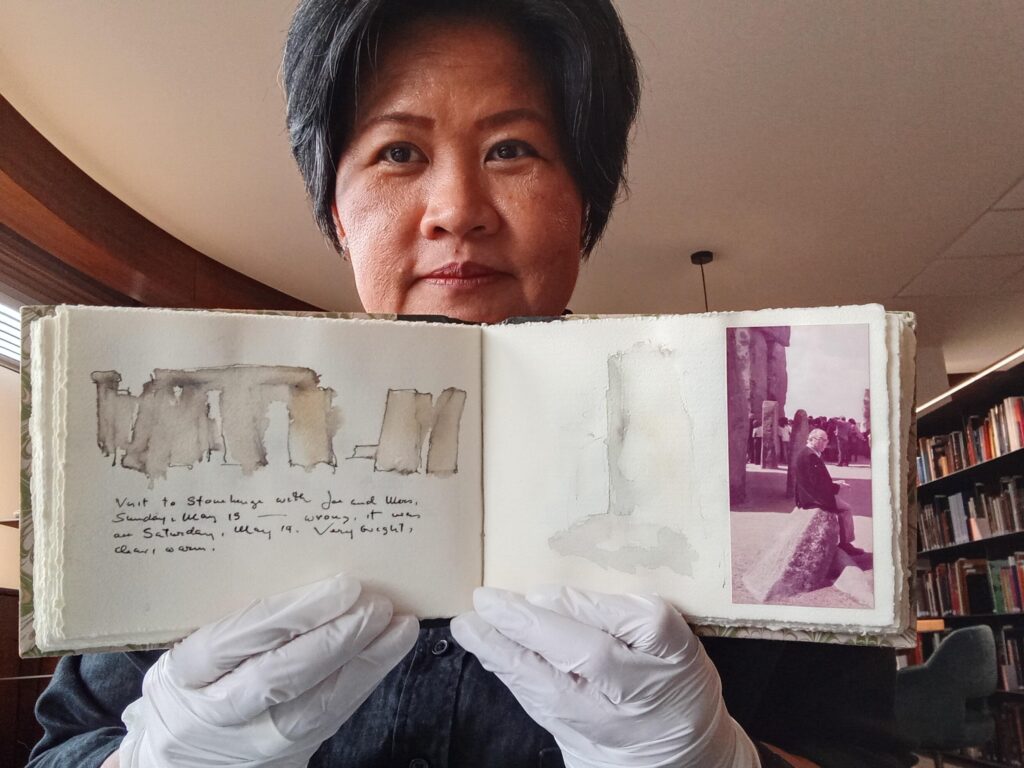
And I was lucky to catch the exhibition <<The most beautiful small museum in the world>> before it ends June 30, at the FJM Ground Floor Gallery. The exhibition showcased works of Spanish abstract artists collected by Zobel and housed at the Museo de Arte Abstracto Español, considered “a space of freedom independent of the political regime, bolstered an entire generation of artists, prepared the next, and produced a new audience in a country that did not have contemporary art museums until after its transition to democracy…”

Fundacion Juan March, Madrid. 26 April-30 June 2024.
At the Museo de Arte Abstracto Español, three sketchbooks (Nos. 99, 116, and 119) provided access to more information on Zobel’s notes on Cuenca and travels to Boston, New York, and London. Additionally, I had the opportunity to see The View XXVI (1974, oil and graphite on canvas) again while on display at the recently rehabilitated museum. I first saw this artwork in the first iteration of Zobel. The Future of the Past at the Museo Nacional del Prado in 2022. This painting will also travel to the Philippines for the September exhibition.
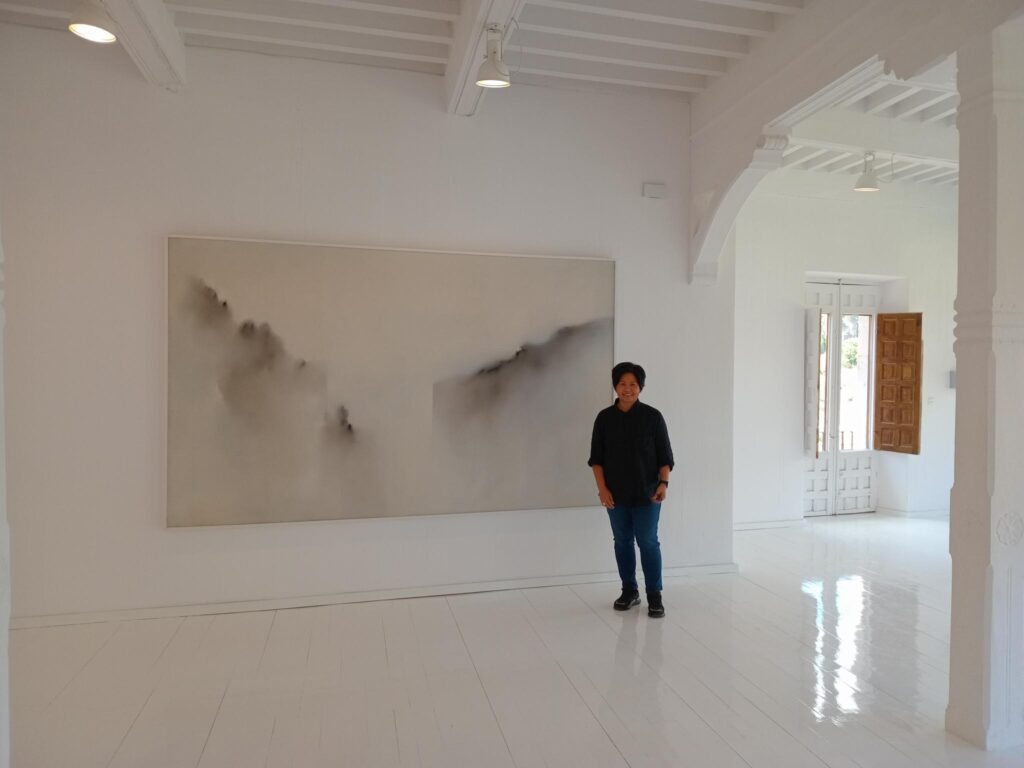
Colección Fundación Juan March, Museu Fundación Juan March, Palma, 0197P
And I met Pedro Escudero Simón, also known as Perico, an art professor at the Universidad de Castilla- La Mancha, Cuenca, who now owns the tórculo (press) of Zóbel. It was given by Zóbel to Melli Perez Madero, a printmaker who worked closely with Zóbel. In the early 1990s, Simon acquired the press from Perez Madero. Simon hosted us at La Zua, his printmaking workshop, where the press is located. During the interview with the two printmakers, Simon graciously conducted an etching demonstration, while Perez Madero narrated stories of his printmaking days and collaborations with Zóbel at the museum. Mabel Lence was translating for Perico while Sam Perez Fernandez was translating for Melli.
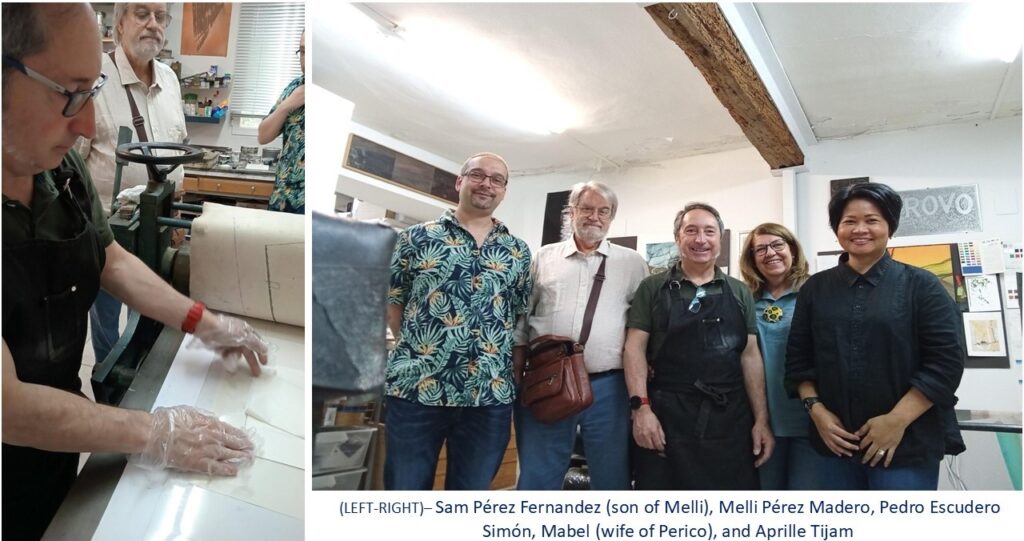
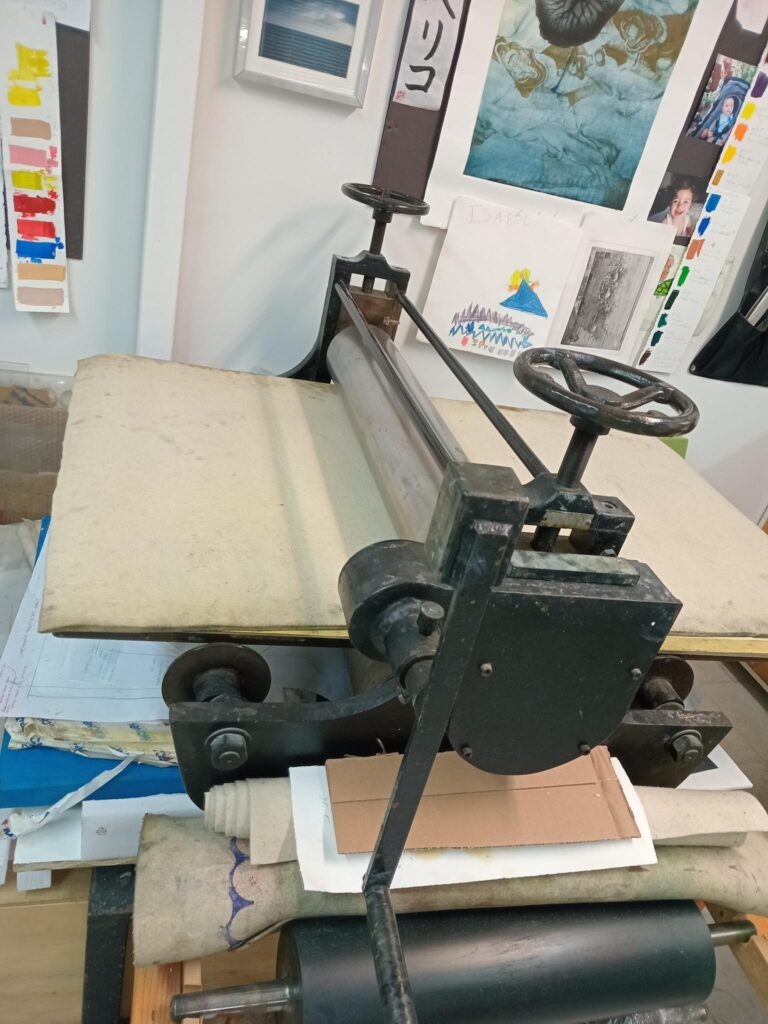
Finally, before I left Cuenca, I made it a point to locate the studio of Zóbel marked with Aqui vivio y tuvo su studio de pintura D. Fernando Zobel de Ayala at the Plaza Mayor in the old town of Cuenca.
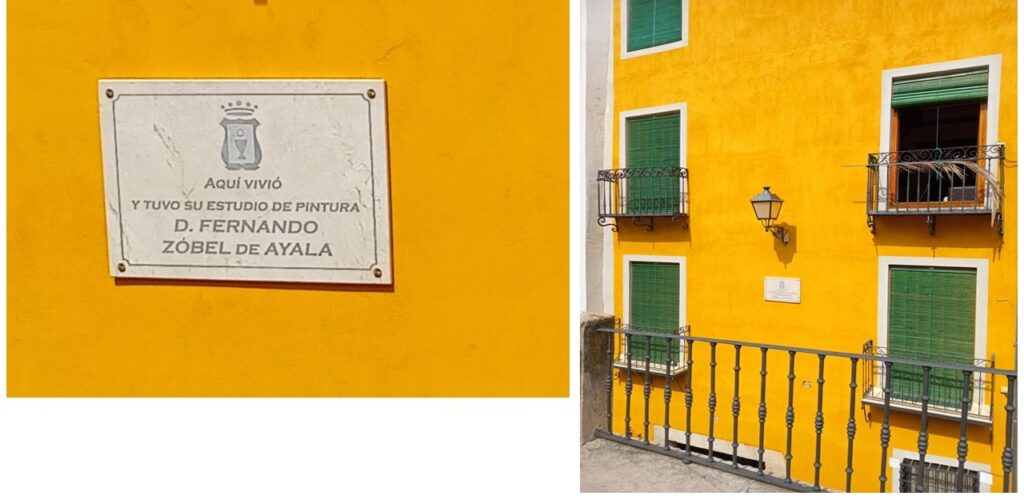
And as part of sharing my research, a copy of my Report Phase 2 Research: Fernando Zóbel as Art Patron and the Spanish Printmakers from the Museo de Arte Abstracto Español, Cuenca was accepted byLuis Martínez Uribe, Director Biblioteca for the Fundacion Juan March library.
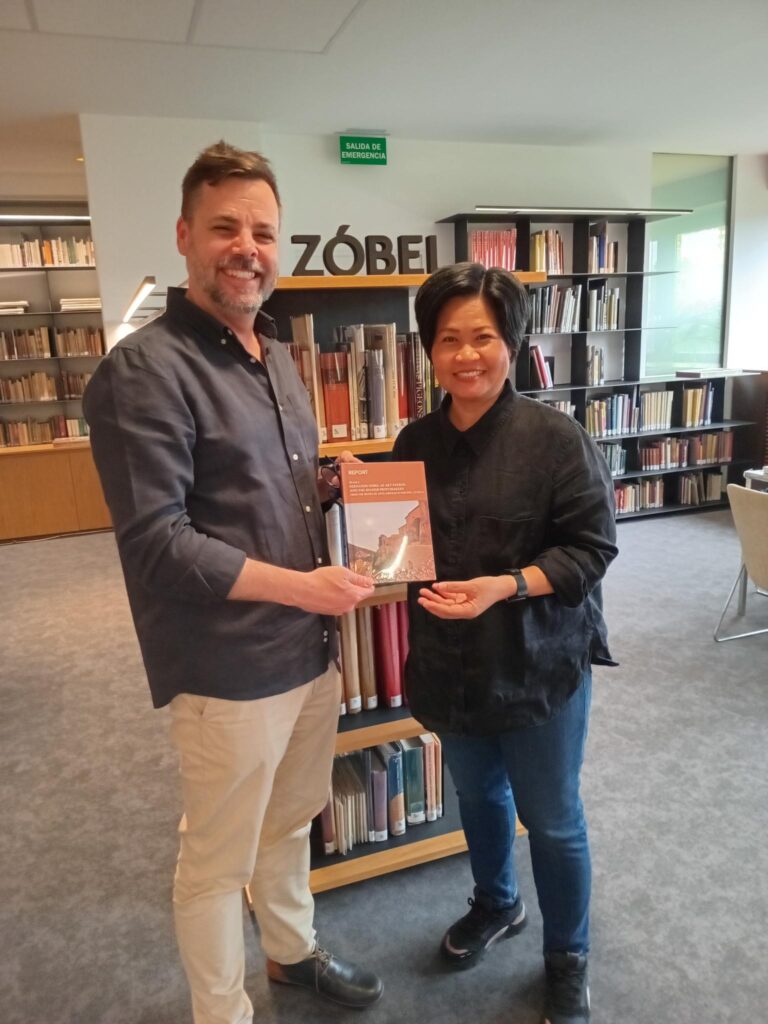
The opportunity to return this year to Madrid and Cuenca to continue with phase two – second part – of my research was supported in full by the British Museum International Training Programme Research Grant, with the collaboration of Ayala Foundation, Inc.|Ayala Museum. I am grateful to Claire Messenger and Anna Cottle at the British Museum for their gracious guidance; Manuel Fontan del Junco (Director of Museums and Exhibitions), Ines Vallejo, Marta Ramírez Menéndez, Marta Suárez-Infiesta Rodríguez, Sonia Corsini, and Sara Leal Rey for welcoming me once again and organizing access to the prints and sketchbooks at Fundacion Juan March; Celina Quintas at the Museo de Arte Abstracto Español in Cuenca for connecting me with Perico Simon, who in turn made it possible for me to meet Melli Perez-Madero; Mariles Gustilo, Ayala Museum Director; Georgina Padilla Zobel and Alejandro Padilla Zobel, the heirs of Fernando Zobel, for the continued support.
